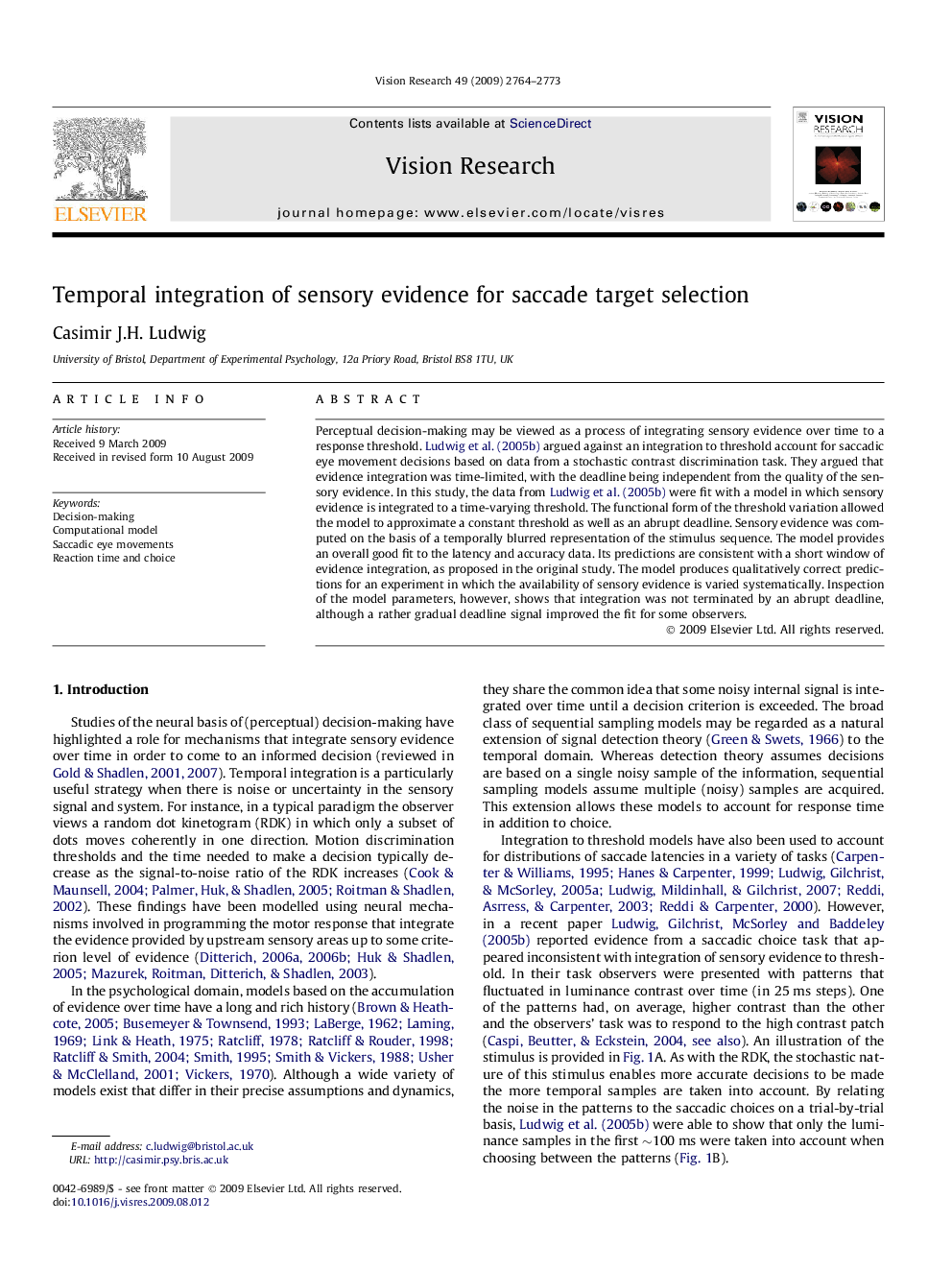| Article ID | Journal | Published Year | Pages | File Type |
|---|---|---|---|---|
| 4034974 | Vision Research | 2009 | 10 Pages |
Perceptual decision-making may be viewed as a process of integrating sensory evidence over time to a response threshold. Ludwig et al. (2005b) argued against an integration to threshold account for saccadic eye movement decisions based on data from a stochastic contrast discrimination task. They argued that evidence integration was time-limited, with the deadline being independent from the quality of the sensory evidence. In this study, the data from Ludwig et al. (2005b) were fit with a model in which sensory evidence is integrated to a time-varying threshold. The functional form of the threshold variation allowed the model to approximate a constant threshold as well as an abrupt deadline. Sensory evidence was computed on the basis of a temporally blurred representation of the stimulus sequence. The model provides an overall good fit to the latency and accuracy data. Its predictions are consistent with a short window of evidence integration, as proposed in the original study. The model produces qualitatively correct predictions for an experiment in which the availability of sensory evidence is varied systematically. Inspection of the model parameters, however, shows that integration was not terminated by an abrupt deadline, although a rather gradual deadline signal improved the fit for some observers.
